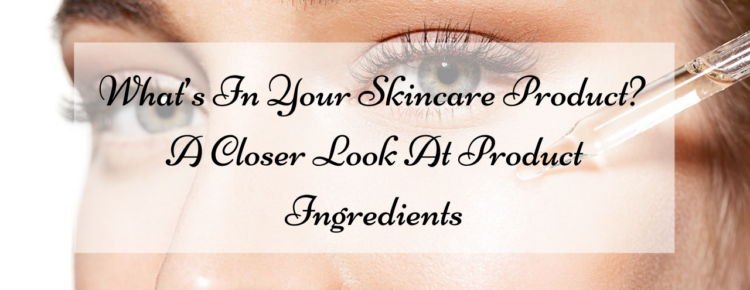What’s In Your Skincare Product? A Closer Look At Product Ingredients
Hello Everyone,
Want to improve the appearance and feel of your skin? You’re not alone, but when it comes to skincare, there are thousands of products available. How do you choose the best ones?
To select a product that’s right for you, take a closer look at the labels of your skincare products.You’ll likely see terms such as “active ingredients” and “inactive ingredients,” but what do those terms actually mean? What do you need to know about choosing skincare products? Read on for the answers to these questions to help you make smarter skincare choices.
You’ve probably checked the label of a food item before, and skincare products can be just as informative— once you know what to look for. Start with (arguably) the most important aspect of the label:the active ingredients and inactive ingredients.

An “inactive” refers to any ingredient in the product that is not active. However, these substances are not unimportant because they may be the vehicle that delivers the active ingredient to the skin. These ingredients may also have other skin-boosting benefits, even if they haven’t been proven to have specific functions. Common inactives include plant oils such as jojoba oil, which acts as skin balancers; plant butters such as shea butter or cocoa butter, which help moisturize and protect skin; and aloe, which has a number of skin benefits include moisturizing and cooling. Essential oils may also be included for natural fragrance.
It’s important to note that your skin may react to different active ingredients, so it’s smart to read the label on any product you try and follow the directions carefully. Overusing a product could cause more damage than good, especially if you have sensitive skin.
Because everyone’s skin is different, if you have a reaction to certain products, read the label of any product carefully before you try it. For more information on this topic, check out the accompanying resource by SeSpring.
This infographic was created by SeSpring, a manufacturer of a gentle gel cleanser
